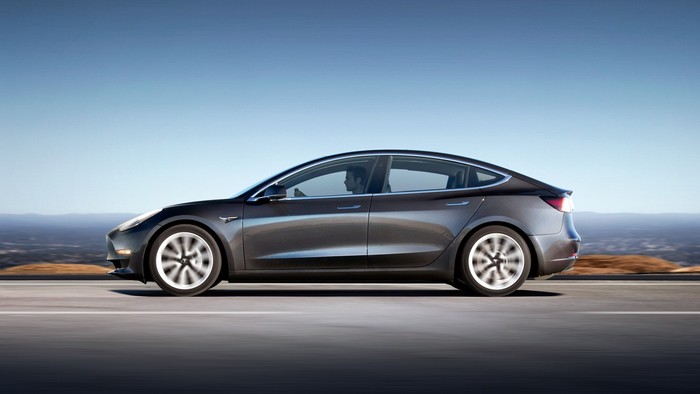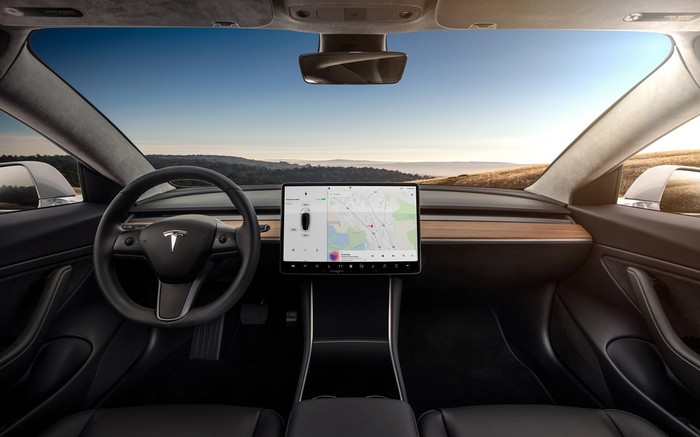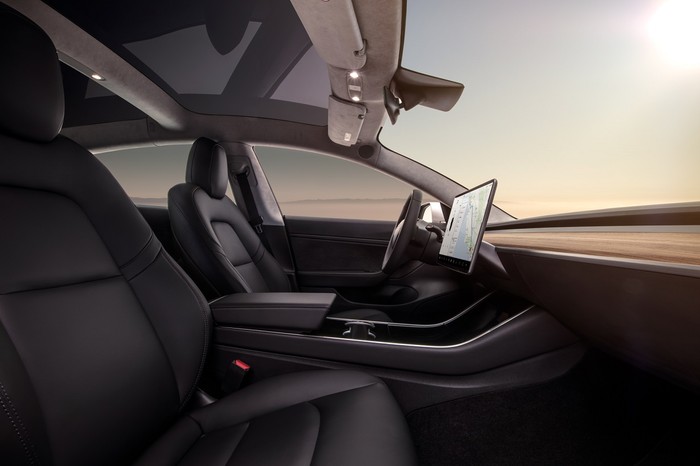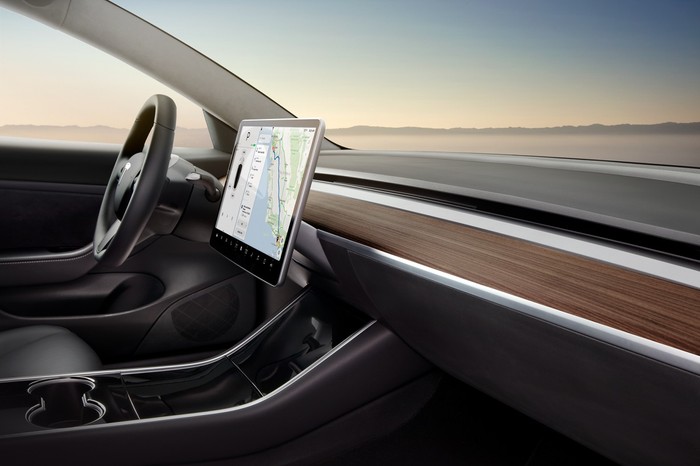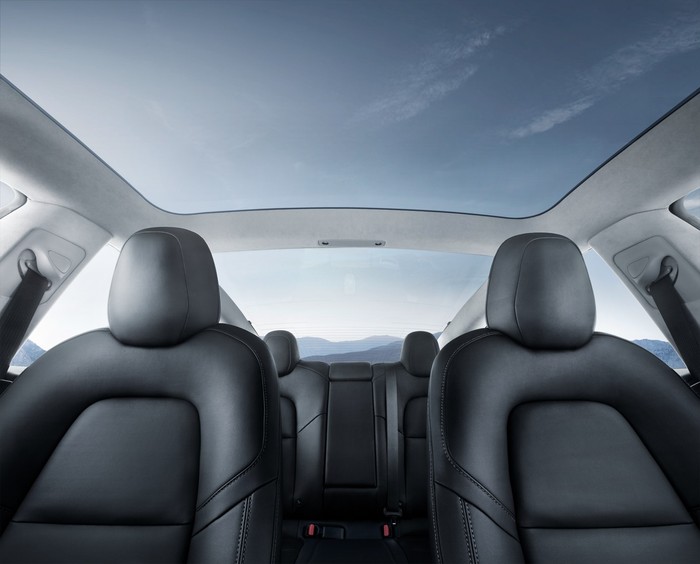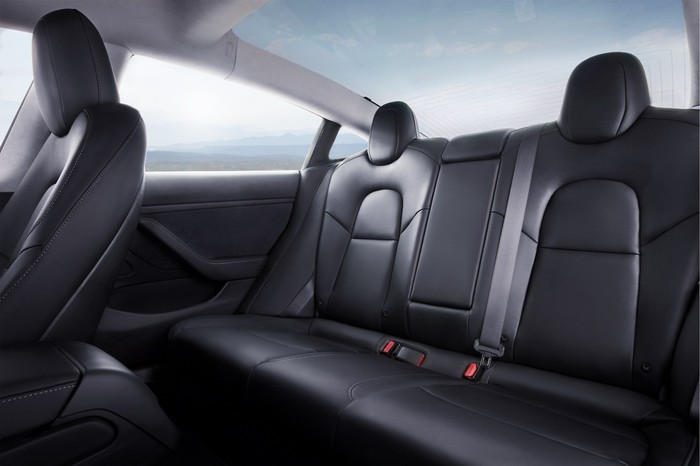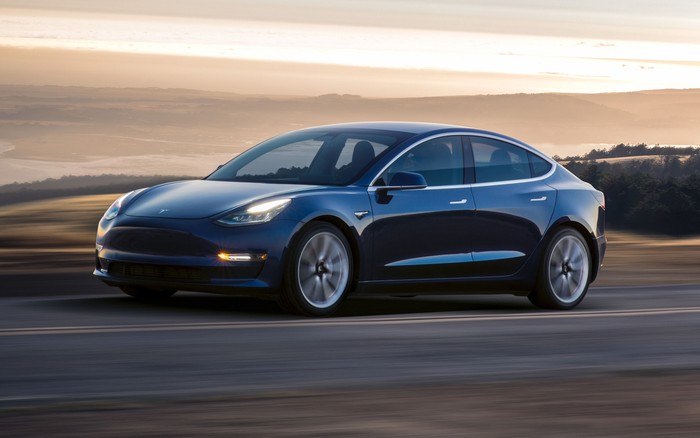

2018 Tesla Model 3
The long-anticipated Model 3 is billed as Tesla's first mass-market model. Considerably more affordable than the bigger Model S, the 3 promises to bring premium zero-emissions driving to more motorists than ever before. And with seven hundred thousand people in line to get the Model 3, it's safe to say it's the car that will make or break Tesla.
Technical specifications
Tesla has opted not to release key specifications such as the size of the Model 3's battery pack and the output of its motor. All we know at this point is that the base version (which corresponds to the advertised base price of $35,000 before government incentives) has 220 miles of range, a 5.6-second zero-to-60-mph time, and a 130-mph top speed.
The second powertrain option is built around what Tesla calls a Long Range battery pack. Again, more specific details haven't been announced yet. Long Range cars can travel for up to 310 miles on a single charge, they take 5.1 seconds to reach 60 mph from a standstill, and they can hit a top speed of 140 mph.
Model 3 owners can plug into Tesla's Supercharger network, though unlike Model S and Model X owners they have to pay every time they use it. The Supercharger gives the standard Model 3 about 130 miles of range per 30 minutes of charging; the Long Range model boosts mileage to 170.
As of writing, both variants of the Model 3 come with rear-wheel drive. High-performance and dual-motor all-wheel drive models will be added a little later in the production run.
Life aboard
The Model 3 is unlike any car before it in the sense that it doesn't have a traditional instrument cluster. Every single gauge, button, switch, light, and knob is grouped into a massive, television-like touch screen attached to the middle of the dashboard. The setup gives Tesla's smallest car an open, uncluttered cabin, though we suspect it takes a little bit of time to get used to.
An electric motor is more compact than a comparable gasoline-powered four- or six-cylinder, so the Model 3 offers a spacious cabin with seating for five adults. However, cargo capacity is a little on the low side at 15 cubic feet.
Standard and optional features
The Model 3 comes standard with the 220-mile battery pack, fast charging compatibility, 18-inch alloy wheels, full LED lighting, a 15-inch touch screen, navigation, a rear-view camera, Bluetooth connectivity, on-board Wi-Fi, an auto-dimming rear-view mirror, keyless entry, cloth upholstery, and a 60/40-split folding rear seat.
The Premium Upgrade Package bundles a center console with smartphone docking and covered storage, LED fog lights, side mirrors that are auto-dimming, heated, and power-folding, heated seats, two USB ports for the rear passengers, 12-way power-adjustable front seats, a premium audio system, and a tinted glass roof.
The list of standalone options is short, which was a deliberate move to make the production process as simple as possible. In addition to the aforementioned Long Range battery, buyers can pay extra to order a paint color that's not black, 19-inch alloy wheels, and Tesla's Autopilot software. Finally, full self-driving capability is available at an extra cost, too, though the company hasn't revealed when the software will launch and which markets it will be available in.
Occupant safety
Every Model 3 ships with eight airbags, stability control, traction control, automatic emergency braking, collision avoidance, and a tire pressure monitoring system.
Key competitors
Right now, the Tesla Model 3's most direct competitor is the Chevrolet Bolt. Both cars are fully electric and positioned in the same price bracket, but they're aimed at a different set of buyers. The Chevy isn't as sporty as the Tesla, but it's available right now -- no reservation, no waiting time.
Other electric cars on the market - like the BMW i3, the Volkswagen e-Golf, and the Nissan Leaf - can't match the Model 3 in terms of range, features, or both.
Buyers can also look at compact luxury sedans like the BMW 3 Series, which the Model 3 was designed to compete against. While the 3 Series isn't available with a battery-powered powertrain, BMW offers a plug-in hybrid model named 330e iPerformance that boasts about 20 miles of electric-only driving.
